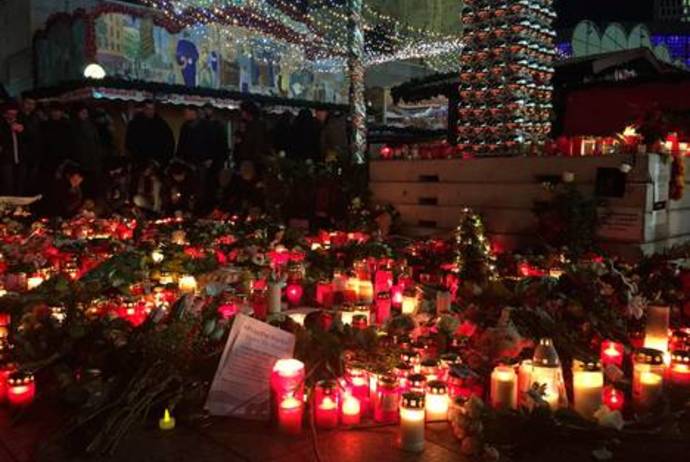It seemed to be a normal Monday night as people from all over the world came to Berlin to visit the charming Christmas market at Breitscheidplatz, marveling at the delightful little booths and getting last minute shopping done for the holiday season. It wasn’t until around 8PM that horror struck, as a semi-trailer truck plowed through the crowd leaving 12 people dead and 56 injured. Amongst those who were killed is the Polish truck driver that was shot by the perpetrator who then went on to steal the vehicle in order to execute his heinous plans. The shocking and murderous rampage then led onto a vicious manhunt by German authorities.
Throughout the past year, Germany and other European countries have been on high alert for radical Islam terrorist activity. Just a few months ago in July, a similar attack took place in Nice, France when a cargo truck was deliberately driven down the Promenade des Anglais into huge crowds celebrating Bastille Day.
However, the search for the person who committed the Berlin Christmas market massacre turned into a Europe-wide chase when a video of a Tunisian man pledging allegiance to ISIS surfaced four days after the terrifying attack. On December 23rd, the same day the footage was released, the man in the video was killed early in the morning in the Italian city of Milan.
His name was Anis Amri and when he was asked by Italian police for his papers, he pulled out a gun from his backpack and started firing at them. This turned into a huge shootout in the quiet Sesto San Giovanni district of Milan which resulted in the death of Amri shortly after 3AM. It turns out that the Tunisian convict has been on Germany’s threat list since January because of his strong ties to Islamic radicalism but somehow he was overlooked. Even though, Amri’s fingerprints have been found inside the truck in Berlin, it hasn’t been confirmed by authorities if he is the one guilty of the crime because the investigation is still being carried out.
A young Italian woman who had been living in Germany, Fabrizia Di Lorenzo, was one of the victims murdered in the market terrorist attack. Since December 19th, candlelight vigils have been held at Breitscheidplatz by those mourning the loss of all the people who were affected by the tragedy. The Berlin Christmas market has recently reopened which proves to be a sign of hope and a true demonstration of German resilience.







































